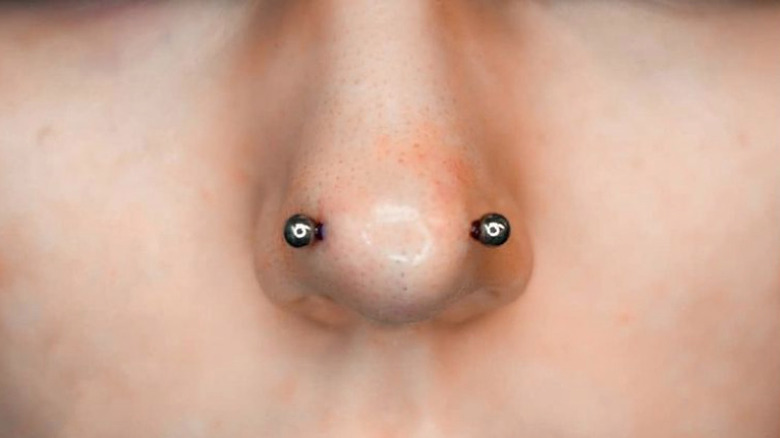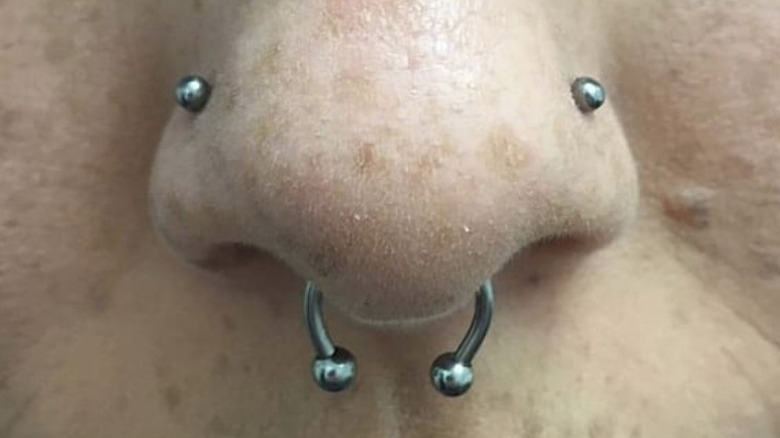Everything You Need To Know About A Nasallang Piercing
When it comes to piercings, you might decide to go for something tried-and-tested, like a couple of earlobe piercings or a nostril piercing, for example, but what if you want something a little different?
Sure, there are some less widespread but still familiar piercings — like the septum piercing — but if you really want to set yourself apart from the rest, why not consider a nasallang piercing, described by BodyCandy as "one of the coolest piercings" out there? If you haven't heard of it before, don't worry as you're not alone. Many people aren't familiar with the piercing, let alone have one themselves, and it's one that people often get when they've already got a few piercings already; rarely would somebody get a nasallang piercing as their very first.
However, you may want to look into them a little more. What are they, do they hurt, and is it a complicated piercing? Find out the answers to these questions and more in our useful guide, right here.
It's also known as a tri-nasal piercing
Professional piercer Courtney Morrison told Byrdie that "a nasallang piercing is a single bar placed through the right nostril, the septum and the left nostril" — sort of like a bridge piercing but further down. It looks like two separate piercings, one in each nostril, but the bar is just a single piece of model going from one side of your nose across to the other. They cross through the septum — and are for this reason sometimes also called a tri-nasal piercing — so in one sitting you're getting both nostrils and your septum pierced.
Surely that's gotta be pretty painful, right? Yup, you'll need a decent pain tolerance for this piercing, and it can be a bit more expensive than simpler piercings as you'll probably need a fairly experienced piercer too. Byrdie describes the pain as being "somewhere in the 8 out of 10 range," so it's not the most painful piercing out there, but it will definitely hurt. You'll have to look after it well to avoid infection, too.

